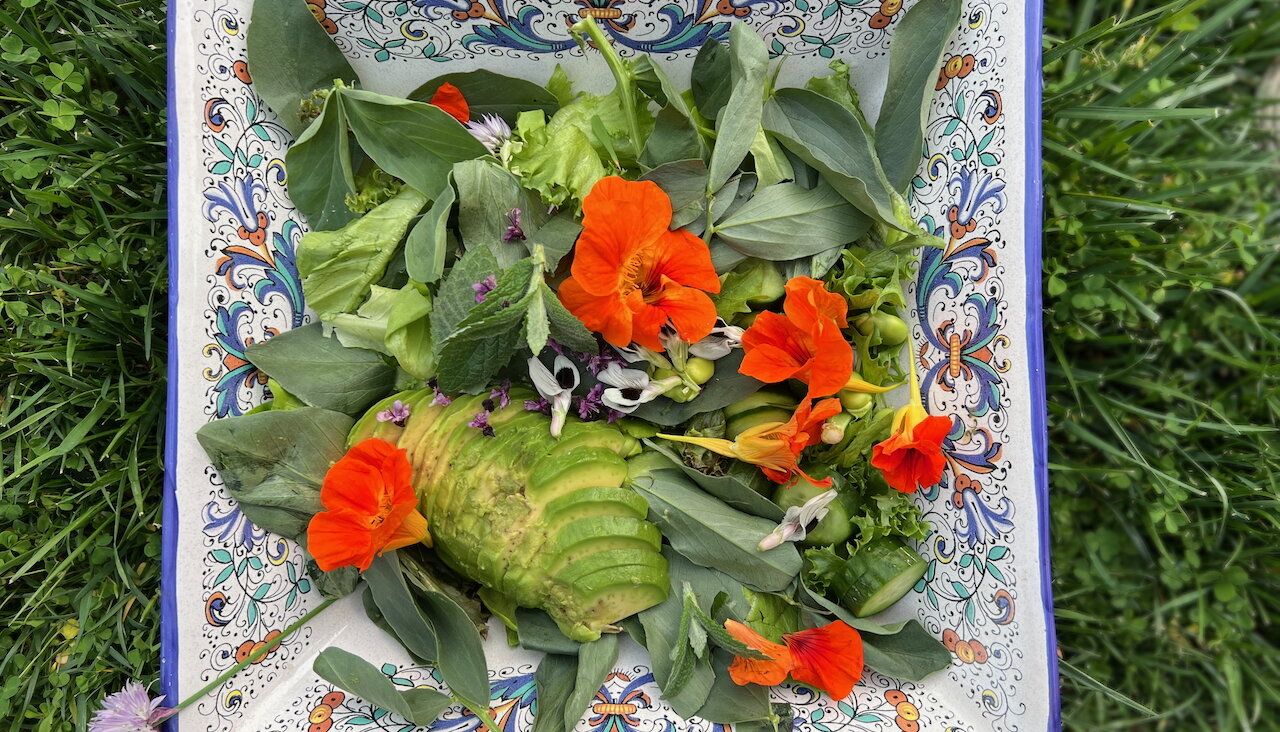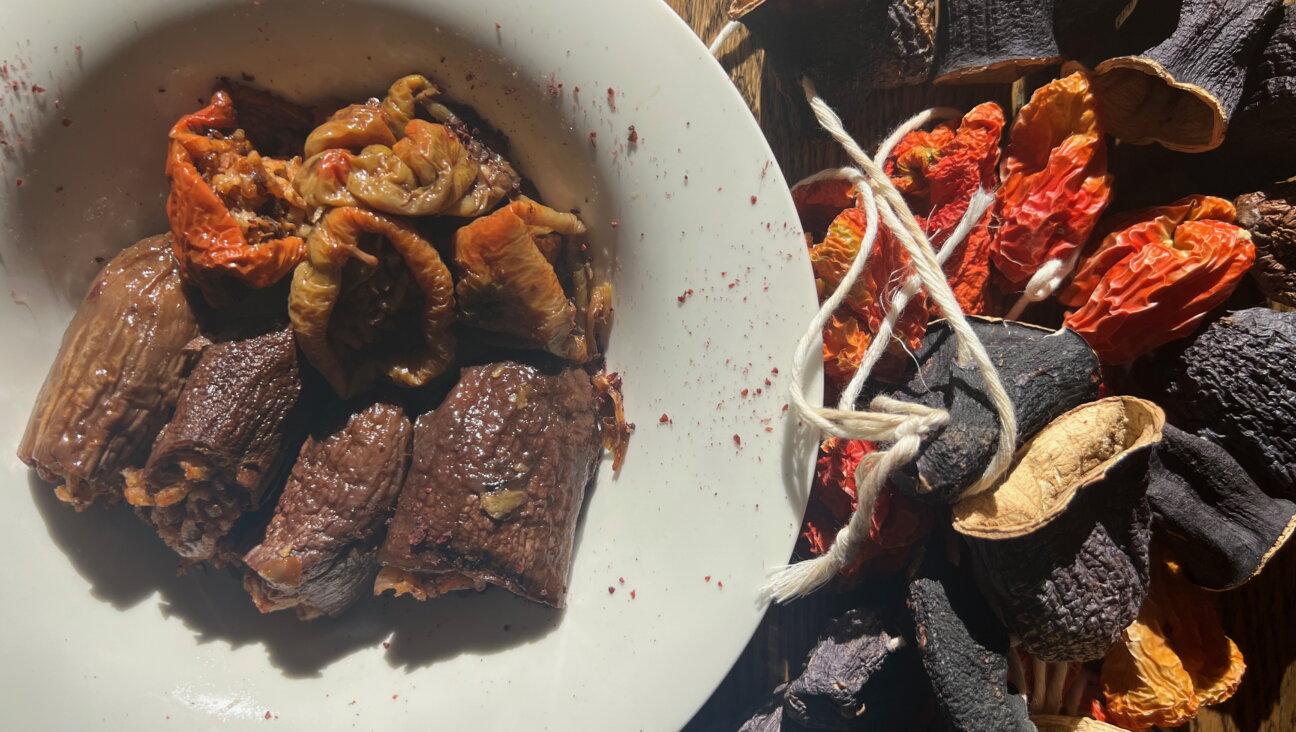Shabbat Meals: The Big Blintze

Image by iStock
In my family, there is one dish that is quintessentially for Shavuot, affectionately known as the “Big Blintze,” which takes the central ingredients of a cheese blintze and turns them into a delectable casserole. I try to make it every year for the holiday, or for the Shabbat closest to it, a creamy reminder of the custom of eating dairy food to commemorate the Revelation on Mount Sinai and our historical entrance to the land of milk and honey.
The recipe is from my mother; the tradition of eating it on Shavuot is not. While food played an outsized role in my childhood — a college roommate, on a visit to our home, said she never heard a family talk as much about food as ours did — I did not grow up particularly observant and, honestly, have no memory of anything special on Shavuot until my synagogue confirmation late in high school.
My parents were each raised in typical Orthodox fashion, and kept a kosher home when they married. But my father’s mother, sweet but very old-worldly, didn’t believe that my English-born mother kept kosher strictly enough, so my parents abandoned the tradition (or so the story goes.) All I know is that I grew up with two sets of dishes all mixed together and a grandmother who ate cottage cheese from a paper plate in the corner of the kitchen. Only as an adult, for very different reasons, did I overcome the negative connotations I had absorbed from childhood about the Jewish dietary laws and establish my own kosher home.
But the amazing thing about food traditions within families is that they are malleable, molded by the times we live in, and also by which we choose to continue, discard or reshape to reflect new sensibilities and values. So while the link between the Big Blintze and Shavuot is a relatively new one in my family, the recipe itself is old and constant, a consistent thread linking generations even if the context has changed.
My copy of the recipe remains on the 3-by-5 index card on which it was first written, the ink is fading and the card splotched, but the credit clear: “from Mom, of course.” Where did she find it? No longer alive to ask, I searched the rectangular recipe box I inherited from her, stuffed with newspaper clippings, scraps of paper, notes in my handwriting and my sister’s, and her favorite recipes, filed in no particular order.
And there I found not one, but two, renditions of what she called “Baked Cheese Blintze Casserole.” First, I spotted a typewritten version on a small piece of paper. Then I came upon the recipe written in my mother’s hand, on a lined index card with her friend Beverly’s name printed on the top. The recipes are essentially the same, the only difference is in the mix of cheeses used in the filling.
I have no idea how the name Big Blintze came about, but I believe it perfectly describes the dish, with its mixture of sweetness and tang, appearing deceptively easy to prepare but actually tricky to complete, a fitting accompaniment to a holiday that is both direct and highly complex. Enjoy.
The Big Blintze
Although this might sound like a dessert, we serve it as an entrée, with cold soup and a generous salad. It’s also a wonderful buffet dish.
Batter:
½ pound melted margarine
2 eggs
½ cup sugar
¼ cup milk
1 teaspoon vanilla
1 cup flour
3 teaspoons baking powder
Filling:
2 pounds farmer cheese, or 1 pound farmer cheese and 1 pound cottage cheese
2 eggs
¼ cup sugar
Juice of one lemon
1) Mix the wet batter ingredients, then add the sifted flour and baking powder. I find it best to make this in a food processor, so that the batter is smooth and fluffy. Pour a little less than half the batter into a greased 9-by-13 inch casserole dish, spreading evenly across the bottom.
2) Mix together ingredients for the filling, and spread evenly over the bottom layer of batter.
3) Now comes the hard part: covering the filling with the remaining batter. I find it works to place small blobs of the batter gently on the filling, then try to smooth them together with a small spatula or butter knife. (That’s why it’s best to have a little more batter to work with on top.)
4) Bake in a pre-heated 350 degree oven for 30-40 minutes. Let cool completely before serving; if you can, refrigerate the casserole. It tastes especially yummy when it’s firm and cold.
The Forward is free to read, but it isn’t free to produce

I hope you appreciated this article. Before you go, I’d like to ask you to please support the Forward.
Now more than ever, American Jews need independent news they can trust, with reporting driven by truth, not ideology. We serve you, not any ideological agenda.
At a time when other newsrooms are closing or cutting back, the Forward has removed its paywall and invested additional resources to report on the ground from Israel and around the U.S. on the impact of the war, rising antisemitism and polarized discourse.
This is a great time to support independent Jewish journalism you rely on. Make a gift today!
— Rachel Fishman Feddersen, Publisher and CEO
Support our mission to tell the Jewish story fully and fairly.
Most Popular
- 1

Fast Forward Ye debuts ‘Heil Hitler’ music video that includes a sample of a Hitler speech
- 2

Opinion It looks like Israel totally underestimated Trump
- 3

Culture Is Pope Leo Jewish? Ask his distant cousins — like me
- 4

Fast Forward Student suspended for ‘F— the Jews’ video defends himself on antisemitic podcast
In Case You Missed It
-

News In Edan Alexander’s hometown in New Jersey, months of fear and anguish give way to joy and relief
-

Fast Forward What’s next for suspended student who posted ‘F— the Jews’ video? An alt-right media tour
-

Opinion Despite Netanyahu, Edan Alexander is finally free
-

Opinion A judge just released another pro-Palestinian activist. Here’s why that’s good for the Jews
-
Shop the Forward Store
100% of profits support our journalism
Republish This Story
Please read before republishing
We’re happy to make this story available to republish for free, unless it originated with JTA, Haaretz or another publication (as indicated on the article) and as long as you follow our guidelines.
You must comply with the following:
- Credit the Forward
- Retain our pixel
- Preserve our canonical link in Google search
- Add a noindex tag in Google search
See our full guidelines for more information, and this guide for detail about canonical URLs.
To republish, copy the HTML by clicking on the yellow button to the right; it includes our tracking pixel, all paragraph styles and hyperlinks, the author byline and credit to the Forward. It does not include images; to avoid copyright violations, you must add them manually, following our guidelines. Please email us at [email protected], subject line “republish,” with any questions or to let us know what stories you’re picking up.
















